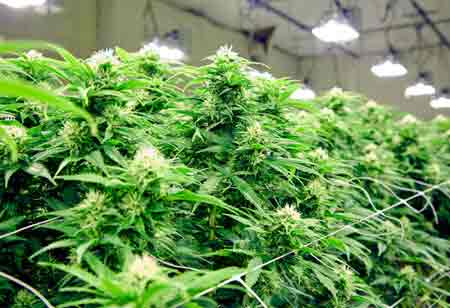Thank you for Subscribing to Cannabis Business Insights Weekly Brief
Nanotechnology in Medicinal Cannabis Delivery: Exploring Advanced Formulations for Enhanced Bioavailability in APAC
The APAC medicinal cannabis market is evolving with nanotechnology enhancing cannabinoid delivery, improving bioavailability, and meeting increasing demand for effective therapies amid liberalizing regulations.

By
Cannabis Business Insights | Monday, July 21, 2025
Stay ahead of the industry with exclusive feature stories on the top companies, expert insights and the latest news delivered straight to your inbox. Subscribe today.
Fremont, CA: The burgeoning medicinal cannabis market in the Asia-Pacific (APAC) region is witnessing a quiet revolution driven by nanotechnology. As countries across the region gradually liberalize their stances on medical cannabis, the focus is shifting towards optimizing the delivery and efficacy of cannabinoid-based therapies. Nanotechnology, with its ability to manipulate materials at the atomic and molecular scale, offers a promising pathway to overcome inherent challenges in cannabis pharmacology, particularly poor bioavailability.
The Bioavailability Conundrum in Cannabis Medicine
Cannabinoids like THC and CBD, while possessing significant therapeutic potential, are notoriously lipophilic (fat-soluble) and poorly water-soluble. This presents a substantial hurdle for oral administration, the most convenient and standard route of administration. When ingested, a considerable portion of cannabinoids undergoes first-pass metabolism in the liver, leading to significantly reduced bioavailability, often as low as 6 percent for CBD. This means only a small fraction of the active compound reaches the bloodstream to exert its therapeutic effects, necessitating higher doses and contributing to delayed onset and inconsistent patient responses.
Opportunities within APAC
A growing number of countries across the region are legalizing medical cannabis or broadening access to CBD-dominant products, resulting in heightened demand for effective and reliable formulations. This trend is further supported by increasing awareness among patients and healthcare professionals regarding the therapeutic potential of cannabinoids. At the same time, the rising incidence of chronic conditions—such as epilepsy, chronic pain, and neurological disorders—combined with an aging population, is driving the need for more advanced treatment options, where nanotechnology offers the promise of enhanced bioavailability and improved therapeutic outcomes. Significant investment in research and development is also shaping the market; for example, China has been allocating substantial resources to cannabis innovation, while Australian researchers have achieved notable progress in phospholipid-based delivery systems to improve CBD solubility and absorption. Against this backdrop, the APAC medical cannabis market is poised for robust growth, with projections indicating that the CBD segment alone could reach impressive figures by 2030, further incentivizing investment in cutting-edge delivery technologies.
The integration of nanotechnology into medicinal cannabis delivery is poised to reshape the therapeutic landscape in the APAC region. By overcoming the inherent bioavailability limitations of cannabinoids, these advanced formulations promise faster onset of action, more consistent effects, reduced dosing, and potentially fewer side effects. As research continues to advance and regulatory environments mature, nanotechnology-enabled cannabis products tailored to specific medical conditions and patient needs will ultimately enhance the efficacy and accessibility of this promising natural medicine. The future of medicinal cannabis in APAC is undeniably nano-enhanced.






